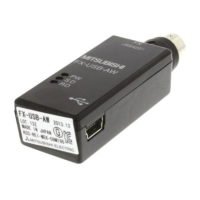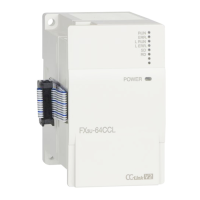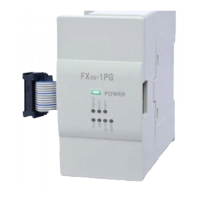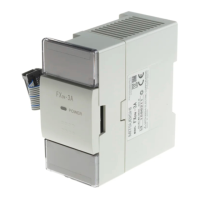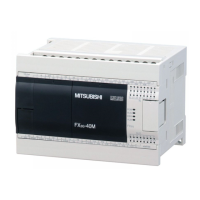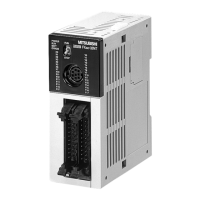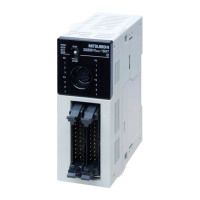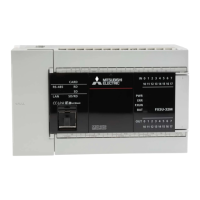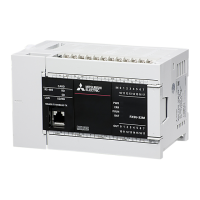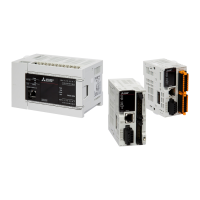7 Applied Instructions
7.20 Character String Control
629
FXCPU Structured Programming Manual
(Basic & Applied Instruction)
1
Outline
2
Instruction List
3
Configuration of
Instruction
4
How to Read
Explanation of
Instructions
5
Basic Instruction
6
Step Ladder
Instructions
7
Applied
Instructions
8
Interrupt Function
and Pulse Catch
Function
A
Relationships
between devices
and addresses
7.20 Character String Control
7.20.1 STR
Outline
This instruction converts binary data into character strings (ASCII codes).
On the other hand, the ESTR instruction converts floating point data into character strings.
1. Format and operation, execution form
2. Set data
3. Applicable devices
FX3U(C) FX3G FX2N(C) FX1N(C) FX1S FXU/FX2C FX0N FX0(S)
Instruction
name
Operation
Execution
form
Expression in each language
Structured ladder ST
STR 16 bits Continuous STR(EN,s1,s2,d);
STRP 16 bits Pulse STRP(EN,s1,s2,d);
DSTR 32 bits Continuous DSTR(EN,s1,s2,d);
DSTRP 32 bits Pulse DSTRP(EN,s1,s2,d);
Variable Description
Data type
16-bit
operation
32-bit
operation
Input
variable
EN Execution condition Bit
Head device storing the number of digits of a numeric value to be
converted
ANY16 ANY16
Device storing binary data to be converted ANY16 ANY32
Output
variable
ENO Execution state Bit
Head device storing converted character string String String
Operand
type
Bit Devices Word Devices Others
System user Digit specification
System
user
Special
unit
Index
Cons
tant
Real
Number
Character
String
Pointer
XYMTCS
D
.b
KnX KnY KnM KnS T C D R
U\G
X Y Modifier K H E
"
"
P
zzz z z
zzzzzzzz zz z zz
zzz z z
STR
EN ENO
d
s1
s2
STRP
EN ENO
d
s1
s2
DSTR
EN ENO
d
s1
s2
DSTRP
EN ENO
d
s1
s2
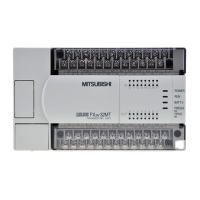
